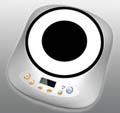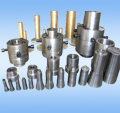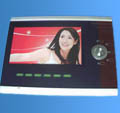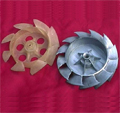

| Address: | PDS Enterprise Inc. 1650 West Artesia Blvd, Suite 278 Gardena, CA90248 |
| Phone: | 1-843-408-0142 |
| Email: | pdsenterprise@gmail.com sales@coolprototyping.com |


Home>FAQ
224. Insulated Runner Molds: Old Technology, Yes; Obsolete, No
When rapid prototyping was still new, molders experienced the problems inherent in using cold runners for production of high-volume, fast-cycling parts, especially in multi-cavity molds. Cold runners can stick or hang in the mold, and interrupt or at least lengthen the cycle. Being the last part of the shot to set up, the cold runner can dictate the overall cycle duration.
Eventually, runnerless molding became seen as a solution to these problems. The first hot runners were of two kinds: Internally-heated ("torpedo" type); and the externally-heated manifold hot runner. Both (especially the internally-heated) rendered color changes difficult, and both tended to leak. These systems were predated by a type of runnerless mold, called "Insulated Runner".
Insulated Runners featured an oversized internal runner cut into both the top clamp plate and the "A" plate. The plastic was kept molten through the cycling phase by the substantial thickness of this runner-cull. The walls of the runner were solid, and a molten center core facilitated plastic flow. This resulted in cylindrical drops (also very thick) and generally to top-center-gated parts.
Fast, uninterrupted cycles were necessary to keep the gates open, as even momentary interruption would cause one or more gates to freeze off.
Using such molds the start of the process was fraught with potential problems. Before automatic injection, multiple shots sometimes were injected into the mold by hand, or one big shot would be injected first, or the back pressure would be greatly increased and extrusion filling the runner cull.
Eventually, to make the startup easier, the gate drops were heated with a probe to make keeping the gates open easier. With very fast cycles (3 to 6 seconds) the heated-probe insulated runner can be of a low thickness, and can even be ground and re-used in the product.
Though they could be challenging to start up and keep running, these systems offered advantages over both cold and hot runners. These include cycles of short duration, and less regrind and scrap - though the thick cull wasn't generally used again for molding. Additionally, this type of tool was less expensive to build and maintain, and posed a lower likelihood of melt leakage. Color changes could be made much more quickly than with hot runners, as the entire colored cull was pulled after the molding machine's barrel was cleaned. Color changes can frequently be performed in 5 minutes, with less than 5 pounds of scrap. Even with the use of heated gate drops, fewer and less-sophisticated controllers were needed. Though it is an old technology, the insulated runner is suitable for multi-cavity, fast-cycling jobs, using a commodity resin like PP or PE, with frequent color changes - and the tooling is more economical to make and is easier to maintain.
 We are constantly looking for new products in order to grow our business and Invention Home has enabled us to streamline that process much more quickly.
We are constantly looking for new products in order to grow our business and Invention Home has enabled us to streamline that process much more quickly. Marsha Dunmyre
CA, U.S.A
Cool Prototyping Copyright 2008-2009 © All Rights Reserved. Rapid Prototyping






